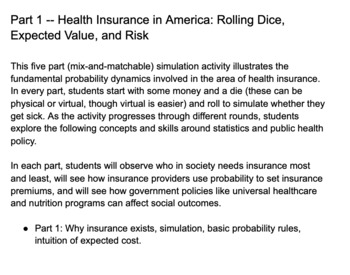Health Insurance in America Part 1 (Activity and Teacher Guide)
- Google Docs™

Also included in
- Health Insurance in America: Rolling Dice, Expected Value, and RiskThis five part, mix-and-matchable, large group simulation activity illustrates the fundamental probability dynamics involved in the area of health insurance. In every part, students start with some money and a die (these can be physiPrice $20.00Original Price $25.00Save $5.00
Description
Part 1 -- Health Insurance in America: Rolling Dice, Expected Value, and Risk
This five part (mix-and-matchable) simulation activity illustrates the fundamental probability dynamics involved in the area of health insurance. In every part, students start with some money and a die (these can be physical or virtual, though virtual is easier) and roll to simulate whether they get sick. As the activity progresses through different rounds, students explore the following concepts and skills around statistics and public health policy.
In each part, students will observe who in society needs insurance most and least, will see how insurance providers use probability to set insurance premiums, and will see how government policies like universal healthcare and nutrition programs can affect social outcomes.
- Part 1: Why insurance exists, simulation, basic probability rules, intuition of expected cost.



